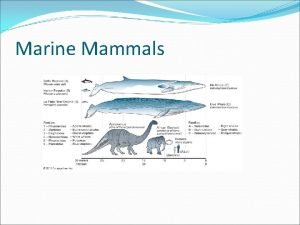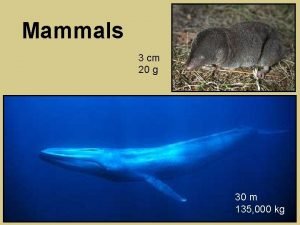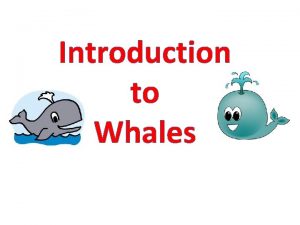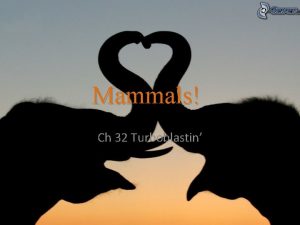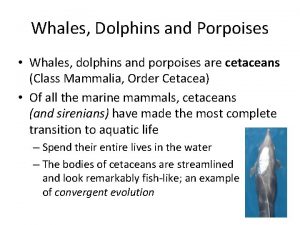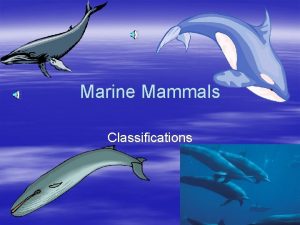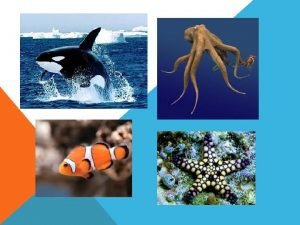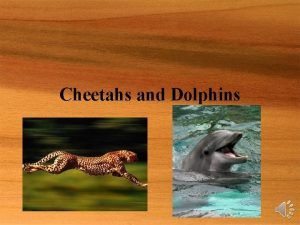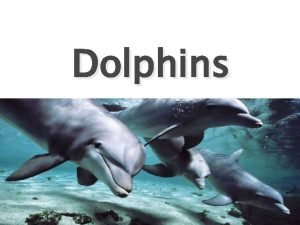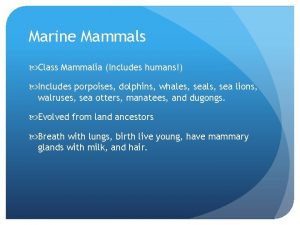Marine Mammals Dolphins and Porpoises Characteristics Dolphins and








- Slides: 8

Marine Mammals Dolphins and Porpoises

Characteristics • Dolphins and Porpoises are classified as toothed whales. They live in both fresh and saltwater. There are currently over 40 recognized species. • sleek, smooth skin lined with blubber • broad flippers and tails • They can jump 3 X their body length and can reach swim speeds of 20 -30 mph. • Keep their teeth their entire lives so age can be determined by tooth analysis

Senses • one nostril at the top of their heads – less body • • to expose to breathe. Special eye adaptations – Strong eye muscles can change lens for land water viewing – They can adjust the pupil Large pupil – deep water Slit pupil – bright light – Clear, jelly-like protein that keeps the salt from irritating the eye. No sense of smell but can “taste” chemicals in the water.

Reproduction and Offspring • Females usually give birth to • • a single offspring after a 12 month gestation. Babies are born tail first, 3045 lbs. Females will baby sit the offspring of other females by forming “playpens” swimming in circles around them to protect from predators. Young nurse for 2 -3 years and can stay with mother between 3 -6 years. Young swim next to mother in “baby position

Males • Male dolphins form coalitions. • A coalition is 2 -3 males that form close bonds with each other. • They herd females for breeding and will cooperate to feed.

Dolphins vs. Porpoises • Porpoises • Smaller heads • Flat teeth Dolphins larger heads (snout) more pointed teeth

Dolphins and Tuna • Dolphins and tuna form a close relationship in • • • the open ocean. Fishermen know that to find tuna they simply need to look for pods of dolphins. They then net the dolphins and are able to capture the tuna. 1973 – 144, 000 dolphins killed in tuna nets 1993 – 3, 605 killed Public outcry made them modify the tuna nets and companies now advertise dolphin safe tuna.

Echolocation – a type of hearing Steps of echolocation 1. Clicks are generated by squeezing air in the blowhole passage. 2. The clicks are reflected off the concave skull and focused by the melon (the bump on the forehead of a dolphin). 3. The melon is made of fat and oil and helps concentrate the clicks. 4. Once the clicks reach the target they are reflected back through the lower jaw and then to the inner ear. 5. The dolphin is able to determine the size, shape and direction of the object by measuring the time between the clicks and their return.

